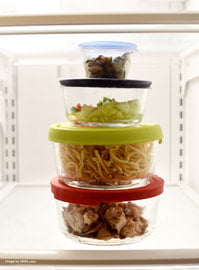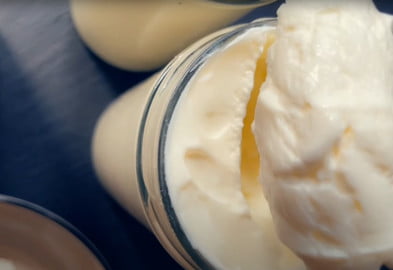A Quick Glance…
The shelf life of cheese can vary widely depending on its type, how it’s stored, and whether it’s been opened. Hard cheeses like cheddar or Parmesan can generally last three to four weeks in the fridge after opening, while softer cheeses like Brie or ricotta may last one to two weeks. Unopened, these cheeses can often last several months in the fridge. However, it’s always important to check for signs of spoilage, such as mold, an off smell, or changes in texture. If in doubt, it’s safest to throw the cheese away. Cheese can also be frozen to extend its shelf life, but this can change its texture and flavor, so it’s typically best used for cooking or baking after freezing.

As cheese lovers, we all know the struggle of trying to make our favorite cheese last as long as possible. Whether it’s a block of cheddar or a wheel of brie, we want to savor every last bite. But how long can we actually keep cheese before it goes bad? In this article, we’ll explore the different types of cheese, how to properly store them, and the signs of spoiled cheese.
First, it’s important to note that not all cheeses are created equal. Some, like hard cheeses such as parmesan or gouda, can last for months in the fridge. Others, like soft cheeses such as brie or feta, have a much shorter shelf life. Knowing the differences between these types of cheese can help us better understand how to store and use them. So, let’s dive in and learn more about how to make our cheese last as long as possible.
Different Types of Cheese
If you’re a cheese lover like us, you may find yourself lost in a wonderland of different varieties, each with its own unique aroma, texture, and flavor. There are more than a thousand types of cheese produced around the world, and each one is made in a different way using various techniques and ingredients. Some of the popular types of cheese include Cheddar, Brie, Gouda, and Mozzarella.
When it comes to cheese pairing, it’s essential to understand the flavor and texture of each cheese. Some cheeses are mild and creamy, while others are sharp and tangy. Soft cheeses like Brie and Camembert pair well with fruits and nuts, while hard cheeses like Parmesan and Cheddar are great with crackers and bread. Cheese and wine is a classic pairing, and it’s important to match the flavor intensity of the cheese with the wine.
The cheese production process also plays a significant role in the taste and texture of the cheese. The type of milk used, the fermentation process, the aging period, and the addition of bacteria all contribute to the final product. For example, blue cheese is made by introducing mold spores into the cheese, which gives it its distinctive blue veins and sharp flavor. On the other hand, fresh cheese like Ricotta is made by curdling milk with lemon juice or vinegar, resulting in a mild, creamy cheese that’s perfect for desserts.
How to Store Cheese
When it comes to storing cheese, temperature and humidity are key factors to consider. We like to keep our cheese in the fridge, ideally in its original packaging or wrapped in parchment paper. Soft cheeses like brie or camembert should be stored in airtight containers to prevent them from drying out.
Temperature and Humidity
Maintaining the ideal temperature and humidity levels is key to ensuring your favorite dairy treat stays fresh and delicious. Cheese is a perishable item, and its quality can be compromised if not stored properly. The temperature for storing cheese should range between 35-45 degrees Fahrenheit, and the humidity should be around 80-85%. These conditions are ideal for slowing down the effects of aging and preserving the cheese’s texture, flavor, and aroma.
Cheese production process plays a significant role in determining the ideal storage conditions. Some cheeses require specific temperature and humidity levels to maintain their distinct texture and flavor. For example, soft cheeses like Brie and Camembert are best stored at a slightly higher temperature and humidity to retain their creamy texture. On the other hand, hard cheeses like cheddar and parmesan require a dryer environment to prevent mold growth. By understanding the cheese production process and its ideal storage conditions, you can ensure that your cheese lasts longer and tastes better.
Wrapping and Packaging
Properly wrapping and packaging your favorite dairy treat can ensure it stays fresh and delicious for as long as possible. Cheese wrapping and packaging are vital factors to consider when storing cheese. The type of cheese and how it was made can determine how it should be wrapped or packaged.
Soft and fresh cheeses should be wrapped in wax paper or parchment paper to allow for air circulation. This will prevent moisture build-up, which can cause the cheese to spoil quickly. Harder cheeses, on the other hand, should be wrapped in plastic wrap or aluminum foil to keep them from drying out. Additionally, cheese packaging should be airtight to keep the cheese from picking up any unwanted odors or flavors from other foods in the refrigerator. With proper wrapping and packaging, your cheese can stay fresh for several weeks.
In conclusion, proper cheese wrapping and packaging can extend the shelf life of your favorite cheese. It is important to consider the type of cheese and how it was made when deciding how to wrap or package it. Remember to keep the cheese in an airtight container to prevent moisture build-up and unwanted odors. Following these tips can ensure that you can enjoy your favorite cheese for as long as possible.
Signs of Spoiled Cheese
If you see mold growing on your cheese or it has a slimy texture, it’s time to toss it out. These are clear signs that your cheese has gone bad and is no longer safe to consume. However, there are other signs to look out for that indicate cheese is spoiled. Here are four common indicators that your cheese has gone bad:
- Unpleasant smell: If your cheese has a pungent odor, it’s a sign that it’s gone bad. Cheese should have a mild, pleasant aroma.
- Discoloration: If your cheese has changed color, it’s a sign of spoilage. Cheese should retain its original color, and any discoloration indicates that it has gone bad.
- Cracks or leaks: If your cheese has cracks or leaks, it’s a sign that it has dried out and is no longer fresh.
- Sour taste: If your cheese tastes sour, it’s a sign that it has gone bad. Cheese should have a pleasant, slightly tangy flavor.
It’s important to store cheese properly to ensure that it lasts as long as possible. Common mistakes in cheese storage include leaving it out at room temperature for too long, not wrapping it correctly, and not storing it in the right place. If your cheese has gone bad, there’s no way to revive it. However, if you catch it in time, there are ways to prevent spoilage and lengthen its shelf life.
In summary, it’s important to be aware of the signs of spoiled cheese to avoid consuming it. If you notice any of the indicators mentioned above, it’s best to throw the cheese away. To prevent spoilage, store cheese properly and avoid common mistakes in cheese storage. By doing so, you can enjoy your favorite cheeses for longer and waste less food.
Shelf Life of Cheese
The longevity of cheese depends on its storage conditions and the specific type of cheese. Some cheeses can last for months, while others may only last for a few days. To extend the shelf life of cheese, there are ways to preserve its freshness. One way is to store it properly in the refrigerator. Cheese should be wrapped tightly in plastic wrap or aluminum foil to prevent air from getting in and causing it to dry out. It’s also important to keep cheese away from other strong-smelling foods, as it can absorb their odors.
To give you an idea of how long different types of cheese can last, here’s a table:
| Type of Cheese | Refrigerator Shelf Life |
|---|---|
| Hard Cheese (e.g. Cheddar, Parmesan) | 6 months |
| Soft Cheese (e.g. Brie, Camembert) | 1-2 weeks |
| Blue Cheese (e.g. Roquefort, Gorgonzola) | 2-3 weeks |
It’s important to note that these are just general guidelines and the actual shelf life of cheese can vary depending on factors such as the quality of the cheese and how it was stored before it was purchased. If you’re unsure whether a particular cheese is still good to eat, use your senses. If it smells bad, has mold growing on it, or has a slimy texture, it’s best to throw it out.
In summary, the shelf life of cheese can vary greatly depending on the type of cheese and how it’s stored. To extend the life of your cheese, make sure to store it properly in the refrigerator and keep it away from other strong-smelling foods. And if you’re ever unsure whether a cheese is still good to eat, trust your senses and err on the side of caution.
Using Cheese After Its Expiration Date
Don’t let expiration dates scare you away from enjoying your favorite cheesy dishes! It’s true that cheese has a shelf life, but that doesn’t mean you can’t use it after it has reached its expiration date. There are ways to repurpose expired cheese, so you can still enjoy its delicious flavor.
However, there are risks to consuming expired cheese. Eating cheese that has gone bad can lead to food poisoning, which can cause symptoms such as stomach cramps, vomiting, and diarrhea. It’s important to use caution when consuming expired cheese, especially if it has mold or an off smell. If you’re unsure about the safety of your expired cheese, it’s best to err on the side of caution and toss it out.
If you do decide to use expired cheese, there are ways to do so safely. Hard cheeses, such as cheddar or Parmesan, can be cut away from the mold or bad portion and used in dishes such as mac and cheese or grilled cheese. Soft cheeses, such as brie or camembert, should be avoided if they have mold or an off smell. However, if they still smell and look okay, they can be used in baked dishes such as quiches or casseroles. By using expired cheese in creative ways, you can still enjoy its delicious flavor without risking your health.
Conclusion
In conclusion, knowing how long cheese lasts and how to properly store it can help prevent waste and ensure that you always have delicious cheese on hand. Different types of cheese have varying shelf lives, so it’s important to check the label and use your senses to determine if it’s still good. Proper storage, such as wrapping it in wax paper or a cheese cloth and storing it in the refrigerator, can also extend the life of your cheese.
However, if you do find yourself with expired cheese, don’t toss it just yet. Certain cheeses, such as hard and aged varieties, can still be used even after their expiration date. Just be sure to check for any signs of spoilage and use your discretion. With a little bit of knowledge and care, you can enjoy your favorite cheeses for as long as possible.





